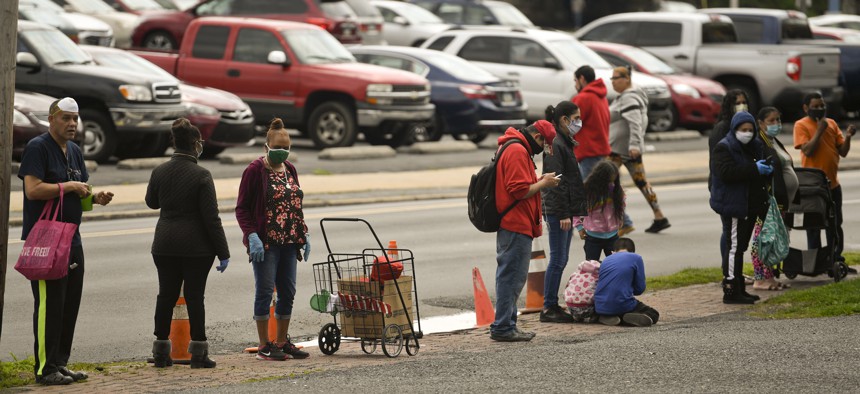How States Can Improve the Customer Experience for Families Seeking Safety Net Supports

Getty Images/Ben Hasty
COMMENTARY | By making changes to technology systems and prioritizing the customer’s point of view, states can provide faster and more efficient access to benefits and ensure families receive the supports they need.
This story was first published by the Urban Institute. Click here to read the original version.
Assistance with food, health insurance, and child care helps millions of families stabilize their lives and better positions them to maintain employment and raise their children. But many working parents miss out on these crucial supports because applying for or renewing assistance is too confusing and time consuming.
The recent Executive Order on Transforming Federal Customer Experience and Service Delivery for government programs aims to address this problem. As states renew their attention on strategies for improving customer experience and service delivery, they can learn from what research has shown are effective ways to improve families’ access to government programs delivering food, medical, and child care assistance.
Through the foundation-funded Work Support Strategies initiative between 2011 and 2016, six states made changes to their benefit delivery systems that resulted in faster benefit delivery, shorter wait times, less paperwork, fewer unnecessary gaps in service and more families receiving the benefits for which they were eligible. These changes helped families seeking assistance while reducing the burden on the state service delivery systems and on state workers.
Lessons from the initiative—which we summarize in new fact sheets about improving access to safety net programs in general and child care assistance in particular—showed large-scale change is possible in government delivery of essential supports.
The states in the Work Support Strategies initiative accomplished the results through four core strategies:
- Improved business processes. States updated and streamlined processes for both customers and staff, such as improving the layout and signage in lobbies, integrating applications and processes for multiple programs, reallocating tasks among staff members and eliminating unnecessary process steps.
- Streamlined policies. States simplified policies and removed unnecessary requirements. They lengthened certification periods, allowed phone interviews, requested only the documentation required by federal law and aligned policies across multiple programs.
- New or updated technologies. States reduced paperwork and sped up processes through new online applications and web portals, electronically verifying data and using document imaging systems. Improved and integrated computer systems also reduced the burden on staff and improved their efficiency.
- Commitment to leadership, data, and stakeholder engagement. State agency leaders facilitated these improvements through active leadership, vision and strategy. They engaged and trusted their colleagues, staff, and community stakeholders as partners in change. And they embraced data for planning and accountability.
Few of these changes were quick or easy, and the work of improving customer experience and service delivery is never done. But the Work Support Strategies initiative offers detailed, real-life lessons and inspiration for states today aiming to address the challenge emphasized by the executive order and create a win-win solution: helping more families access the supports they need and improving the efficiency of state administrative systems.





